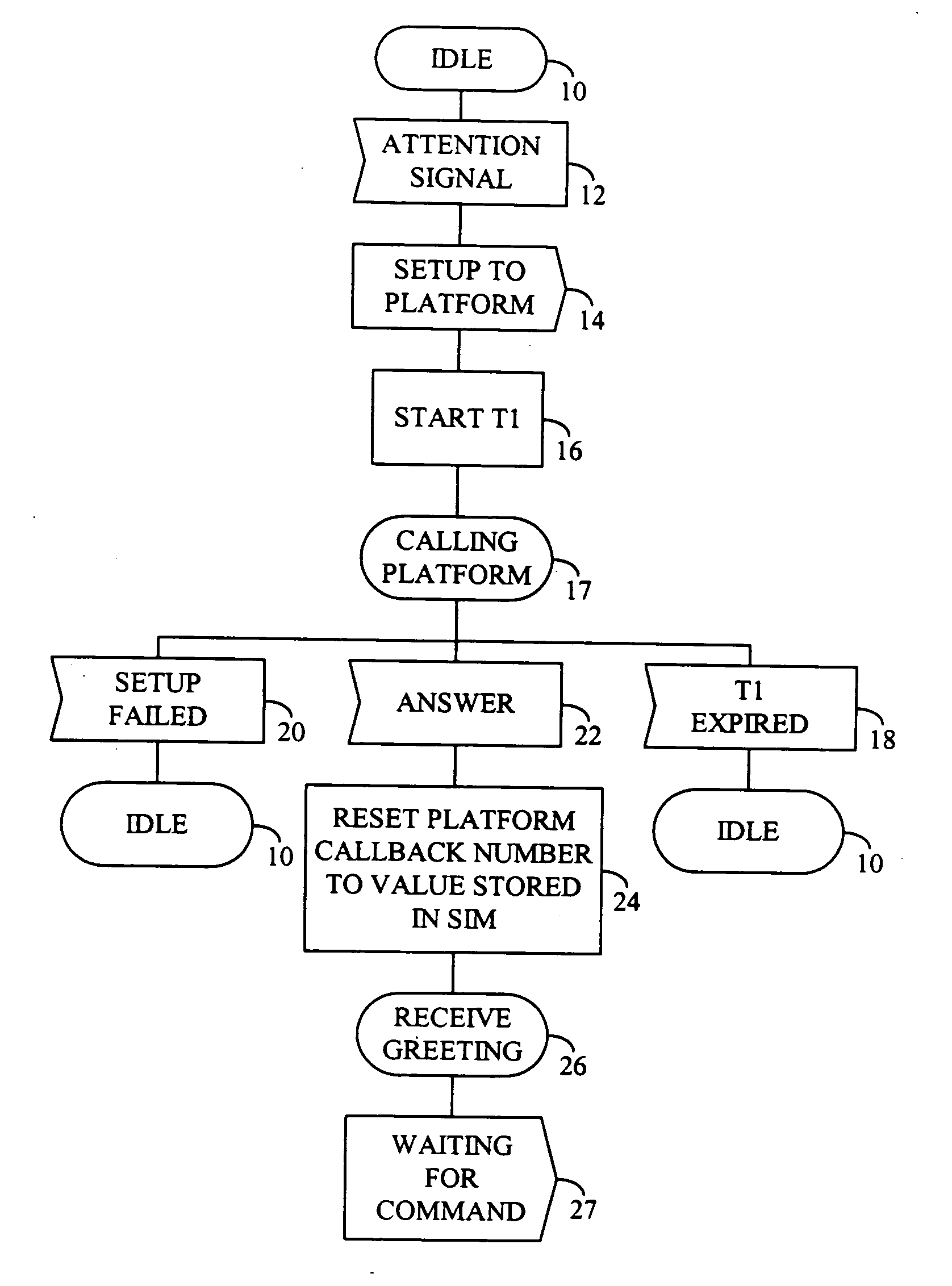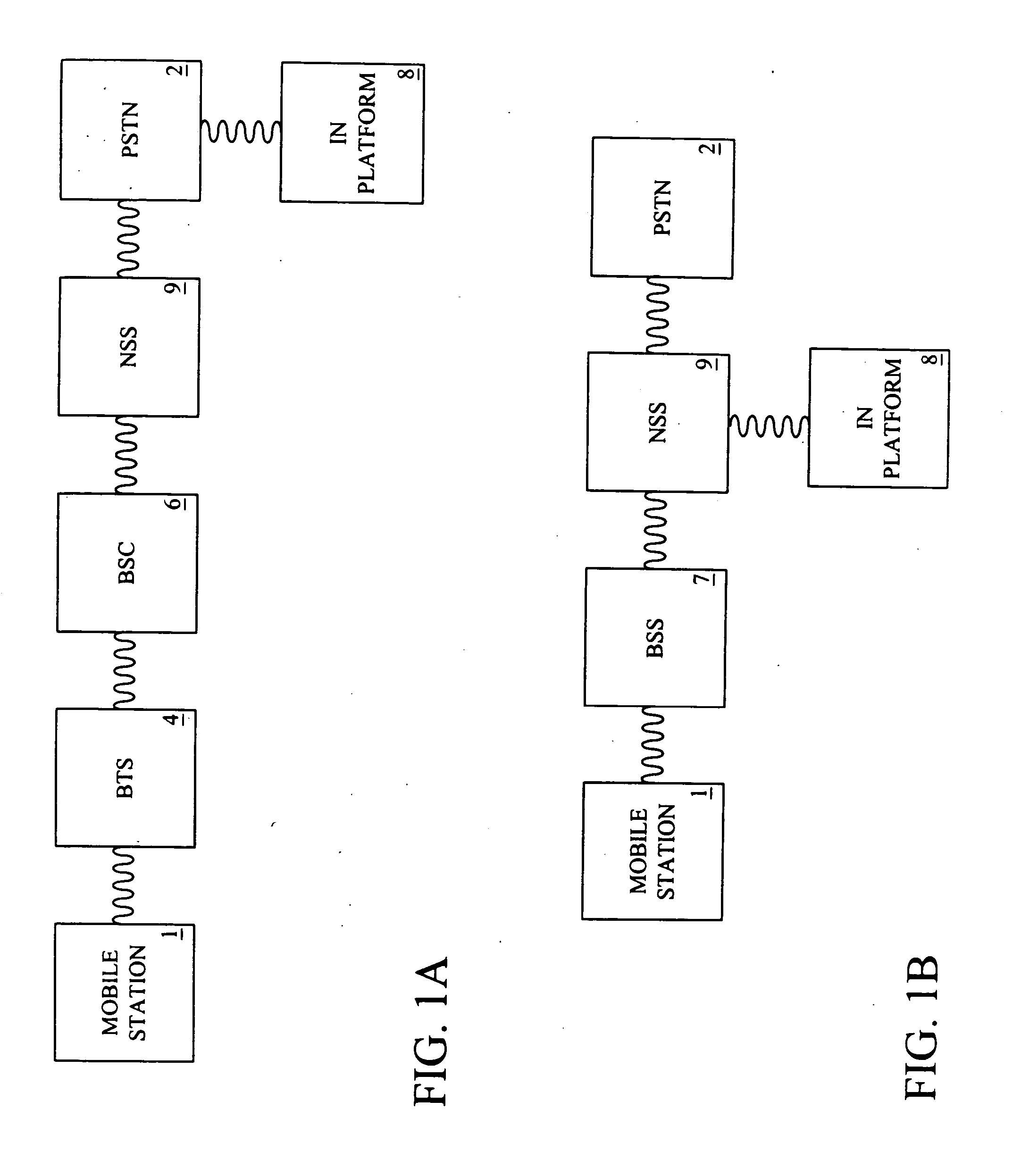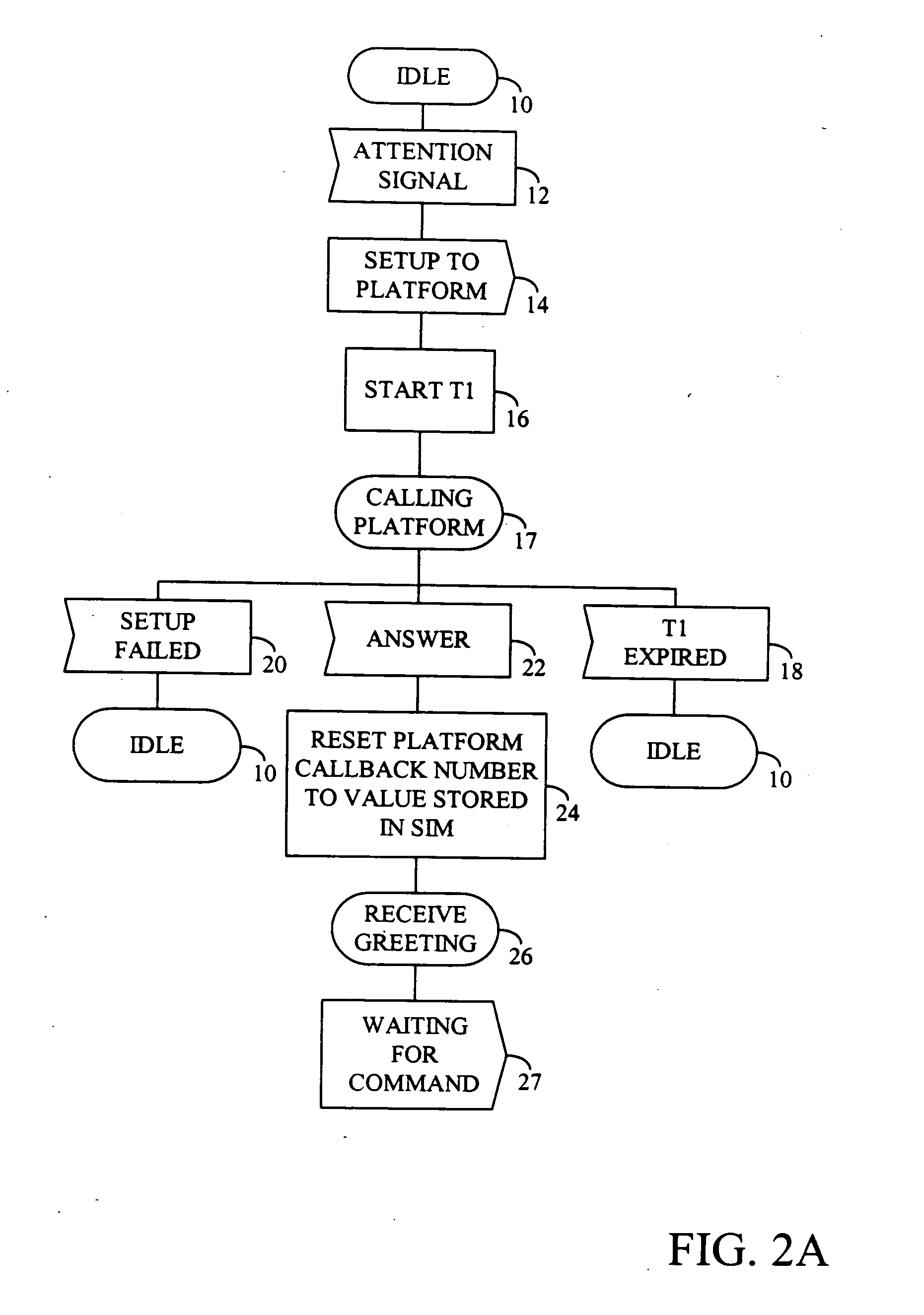Outgoing call handling system and method
a technology for outgoing calls and systems, applied in the field of systems and methods for handling outgoing calls, can solve the problems of difficult to focus on manipulating the dial pad of the telephone, look up the telephone number in the user's telephone book, and disadvantages of the cellular telephone and cellular-telephone systems commonly used today, and achieve the effects of less utilization, reduced utilization of platform capabilities and network resources, and reduced utilization of mobile stations
- Summary
- Abstract
- Description
- Claims
- Application Information
AI Technical Summary
Benefits of technology
Problems solved by technology
Method used
Image
Examples
Embodiment Construction
[0044] In a first embodiment of the present invention provides an outgoing-call handling method, said method carried out by an apparatus comprising a mobile station and an intelligent telecommunications network element, said method comprising the following steps: a) detecting an attention signal; b) calling the network element at a network element callback number; c) connecting with the network element; d) communicating a user command to the network element; e) receiving a command signal from the network element corresponding to said user command; f) disconnecting from the network element; and g) in a mobile station, carrying out a function corresponding to said command signal. A second embodiment includes the steps described in the first embodiment, and step b is carried out in the mobile station. A third embodiment includes the steps described in the second embodiment, and said command signal comprises at least one of: first data corresponding to a telephone number, a control sign...
PUM
 Login to View More
Login to View More Abstract
Description
Claims
Application Information
 Login to View More
Login to View More - R&D
- Intellectual Property
- Life Sciences
- Materials
- Tech Scout
- Unparalleled Data Quality
- Higher Quality Content
- 60% Fewer Hallucinations
Browse by: Latest US Patents, China's latest patents, Technical Efficacy Thesaurus, Application Domain, Technology Topic, Popular Technical Reports.
© 2025 PatSnap. All rights reserved.Legal|Privacy policy|Modern Slavery Act Transparency Statement|Sitemap|About US| Contact US: help@patsnap.com



